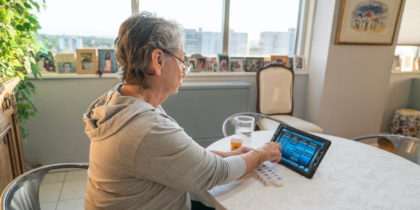Telemedicine is growing fast, but perhaps nowhere faster than in the mental heath field, a fact that a Wisconsin provider has taken full advantage of by developing a telemental health platform, according to mHealth Intelligence.
Telemedicine is a perfect fit for behavioral health challenges — it allows patients to interact with care providers from the comfort of their own homes and avoid the stress of arranging travel and navigating foreign environments. Wisconsin Lutheran Christian Family Solutions has been working on bringing its patients these options since 2008, and currently offers virtual visits along with other services through their 29 outpatient clinics throughout Wisconsin, Minnesota and Michigan. Their telemental health program has an even broader reach, connecting their patients with counselors in Florida, Indiana, Idaho and North Dakota.
The behavioral health provider attributes their growth and success primarily to simplicity. According to Dan Nommensen, LPC, NCC, DCC, coordinator of WLCFS’ member assistance program and a licensed professional counselor, this is crucial for their patients.
“We don’t use anything fancy in our offices,” he says. “It has to be very easy and very simple for people to use. We don’t want to complicate the process for people who are already struggling with anxiety or depression.”
The Patient Experience
Expanding this option is paramount to WLCFS. The innovative provider currently has about 40 telemental health counselors, all of whom use video visits. Prior to a virtual visit, patients receive instructions via mail to help them connect online. They must also read and sign a digital informed consent document before they begin working with a counselor.
Continuing Challenges
Of course, challenges remain. Broadband speed and connectability have improved, but state regulations have proved an impediment in some areas.
Each state in the U.S. has its own telehealth licensing standards and rules, meaning that telemedicine is sometimes prevented from reaching its full potential. Additionally, insurance currently leaves about 60 percent of bills uncovered and under the responsibility of patients. That, though, varies by payer.
According to Nommensen, “Some payers are great, while others really haven’t thought about telehealth at all … Then there are payers who will reimburse only when it’s on their own approved platforms. It’s hard when we use a HIPAA-compliant procedure and process but a payer says that’s not good enough.”
As demand grows on both the payer and provider sides, Nommensen remains hopeful that their services will eventually be available to patients in other states, and with time, more smoothly integrate into EMR, patient portals and other practice management platforms.
The field of telehealth is taking a more patient-centric approach and moving outside the clinical environment. Learn more about how telemedicine is changing the healthcare landscape here.







